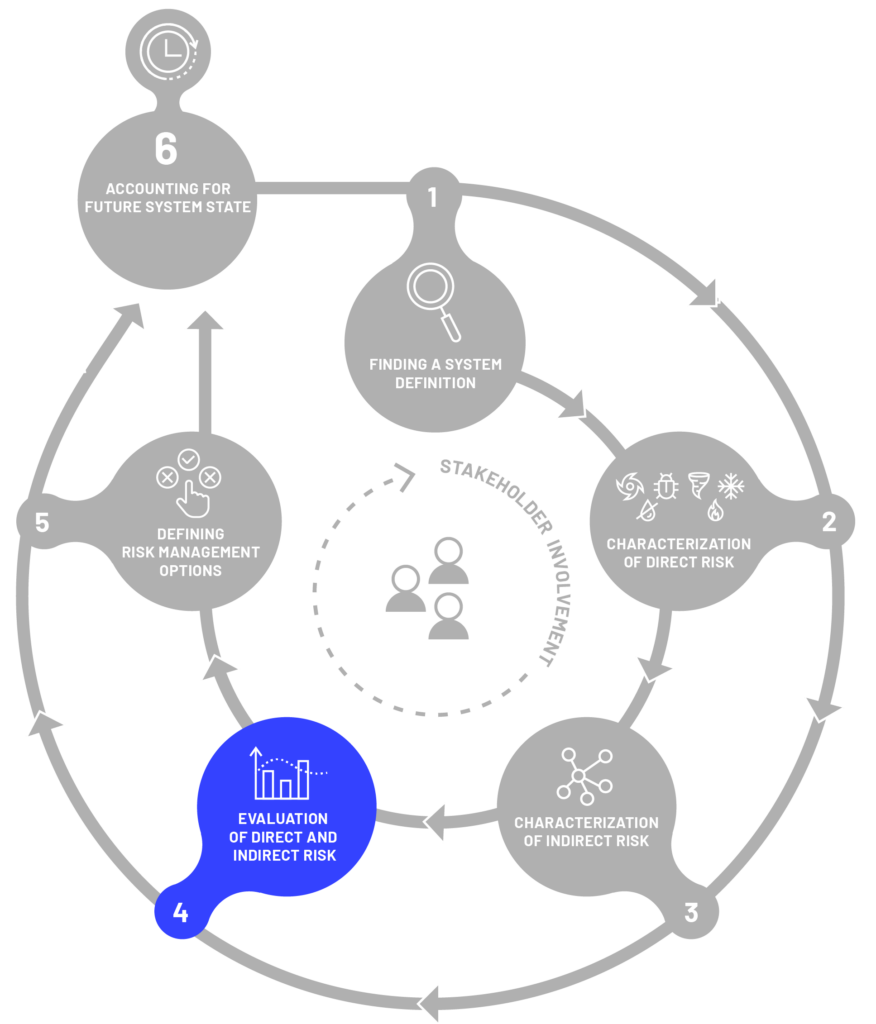Evaluation of direct and indirect risks
The goal of Step 4 is to evaluate the direct and indirect risks characterised in Step 2 and Step 3 and assess them according to a range of evaluation criteria, in relation to the direct and indirect risk metrics selected in Steps 2 and 3. Ultimately, in Step 4, decision makers choose which direct and indirect risks they want to manage and reduce.

Guidance protocol questions
The following are questions that can help decision-makers, stakeholders, and relevant parties in successfully walking through step 4 of the framework. Consider this set of questions as an initial guide for your investigation, recognizing that it is not an exhaustive list.
Risk evaluation criteria
Evaluate various risk metrics from Steps 2 and 3, and determine which risks should be acted upon and managed/minimized. Do this based on comparing the results of direct and indirect risk characterization with risk evaluation criteria. Some of the risk evaluation criteria are outlined in the questions below.
- What are the policy/legislative requirements to manage these direct and indirect risks?
For instance, if a disaster risk management agency has legal responsibility for managing flood protection infrastructure in a certain area, they might focus on upgrading the protection. Similarly, insurance agencies will focus on risks covered by their policies.
- What is the cost-benefit ratio for risk reduction and management?
Stakeholders operate under finite and limited resources, and their decision-making might be led by costs versus benefits.
Communication of risk analysis with stakeholders
- What are the different ways to communicate the results of risk analysis as a part of risk evaluation? Examples include maps, matrices, indices, and curves
Selection of risks to focus on
- Based on the evaluation criteria, what are the risks for which you will be considering risk management options in Step 5?
For instance, focus on reducing risks to transport infrastructure or drought risk in a specific agricultural region.
As in the previous steps of the framework, we are referring to the fictitious multi-hazard event in the Danube Region to exemplify the process of navigating through this stage of the framework. This serves as a practical illustration of how to approach this step and how to address the guidance protocol questions mentioned earlier, using our hypothetical scenario as a guide.
CONCEPTUAL EXAMPLE
There was a drought in the Danube Region (e.g. the 2015 or 2022 drought) that left severe consequences across sectors. After several months, the region is hit by a severe flood (e.g. the 2006 flood) causing severe loss and damage.
Different risk evaluation criteria:
- Availability of water for agricultural irrigation
- dyke repair cost impact on risk owner’s annual income
- amount of losses insured
- event of a specific return period and associated loss
- how long and how often a specific road infrastructure is damaged
